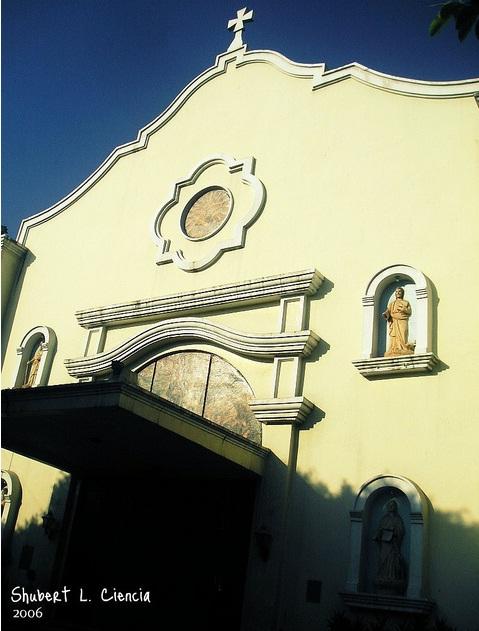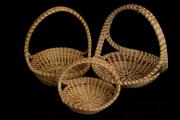
Sanctuario de San Pedro Bautista, also known as San Pedro Bautista Church, is the second oldest, still-surviving church in the country. It was built in 1590 through the efforts of San Pedro Bautista who used to live in the place. The property is under the care of the Order of Friars Minor or the Franciscans and was originally the retreat house for San Pedro Bautista’s fellow Franciscans and other government officials.
The first structures to be built in the estate were the chapel and a small convent made out of bamboo and thatch. The church was renovated several times because of the calamities that struck the area. The present stone church was built in 1699 and was dedicated to then Blessed Pedro Bautista, the founder of the church, whose bones are buried here. At the basement of the church is a catacomb where old friars are interred. One of its main attractions is the Romanesque interior characterized by the mixed architecture as depicted in its Corinthian and Ionic pillars. The century-old meditation cave, sacristy and convent are still preserved. The church has a Baroque-style altar and other 16th century religious icons from Spain.
Where to stay
Here is the list of some of the accommodations that can be found around the city of Quezon. It offers good services and comfortable rooms for all visitors.
- Imperial Palace Suites - Timog Avenue Corner Tomas Morato Avenue, 1103 Quezon City
- Torre Venezia Hotel - 170 Timog Avenue cor Scout Santiago St.,, 1100 Quezon City
- Dangay Suites - 99-A Dangay Street, 1105 Quezon City
- Eurotel Araneta Center, Cubao - General Araneta Corner General Roxas Streets, 1109 Quezon City
- The Sulo Riviera Hotel - Matalino Road, Diliman, Quezon City
- Sir William's Hotel - 39 Timog Avenue, 1103 Quezon City
- Lemon Tree Inn - 18 Scout Magbanua Street near corner of Quezon Avenue, Barangay Paligsahan,, 1103 Quezon City
- Robbinsdale Residences - # 14 Araneta Ave. corner Palanza St., 1113 Quezon City
- Mezza Residences Condote - Aurora Boulevard Corner Araneta Avenue, Guirayan Street, Barangay Dona Imelda, 1000 Quezon City
- La Breza Hotel - Mother Ignacia St., 7876 Quezon City
- Crowne Plaza Galleria Manila - Ortigas Avenue corner ADB Avenue, 1100 Quezon City
- Eastwood Richmonde Hotel - 17 Orchard Road, Eastwood City, Bagumbayan, 1110 Quezon City
- Stone House Bed and Breakfast Quezon City - 1315 E. Rodriguez Avenue, 1100 Quezon City
- Fersal Hotel - Annapolis - 49 Annapolis Street, Cubao, 1100 Quezon City
- The Oracle Hotel - 317 Katipunan Avenue, 1600 Quezon City
Getting around the city
Public transportation within the city, like in most of the urban areas in the Philippines, is facilitated mostly using inexpensive jeepneys and buses. Tricycles give access to more secluded areas, while taxi cabs are available to navigate any course.
This City has 3 Circumferential Roads. The following are:
- C-3: Sgt. Emilio Rivera Avenue and Araneta Avenue
- C-4: Epifanio de los Santos Avenue or EDSA
- C-5: Mindanao Avenue, Tandang Sora Avenue, Congressional Avenue Extension, Katipunan Avenue and E. Rodriguez Avenue
Railway
Currently, two elevated light rail systems and one heavy rail system run through Quezon City: LRT 1 – at EDSA (C-4) connecting North Avenue and Baclaran (Manila) LRT 2 – at Aurora Boulevard (R-6) connecting Santolan (Pasig City) and C.M.Recto Avenue (Manila), and MRT 3 – at EDSA (C-4) from Taft Avenue (R-2 in Pasay City) to North Avenue.
An elevated rail transit system (MRT-4) that was supposed to follow the general alignment of Quezon and Commonwealth Avenues (R-7) was shelved. In its place, a 22 kilometer rail system will be built. The MRT-7 project will commence at North Avenue, connecting the MRT-3 at its northern terminus. It will then go through Commonwealth Avenue, then through Regalado, Quirino Highway, ending in San Jose del Monte, Bulacan. The system has a proposed spur line to connect itself to MRT-2 in Katipunan, passing through the University of the Philippines Diliman and Katipunan Avenue.
The following elevated railway stations in the city (Only 13 Stations):
- MRT-3 (with 5 Stations):
- North Avenue- (Connected to LRT-1 Yellow Line)
- Quezon Avenue
- Kamuning
- Araneta Center-Cubao- (Connected to LRT-2 Purple Line)
- Santolan
- LRT-2 (with 5 Stations):
- Gilmore
- Betty Go-Belmonte
- Araneta Center-Cubao- (Connected to MRT-3 Blue Line)
- Anonas
- Katipunan
- LRT-1 (with 3 Stations)
- Balintawak
- Roosevelt
- North Avenue- (Connected to MRT-3 Blue Line)









